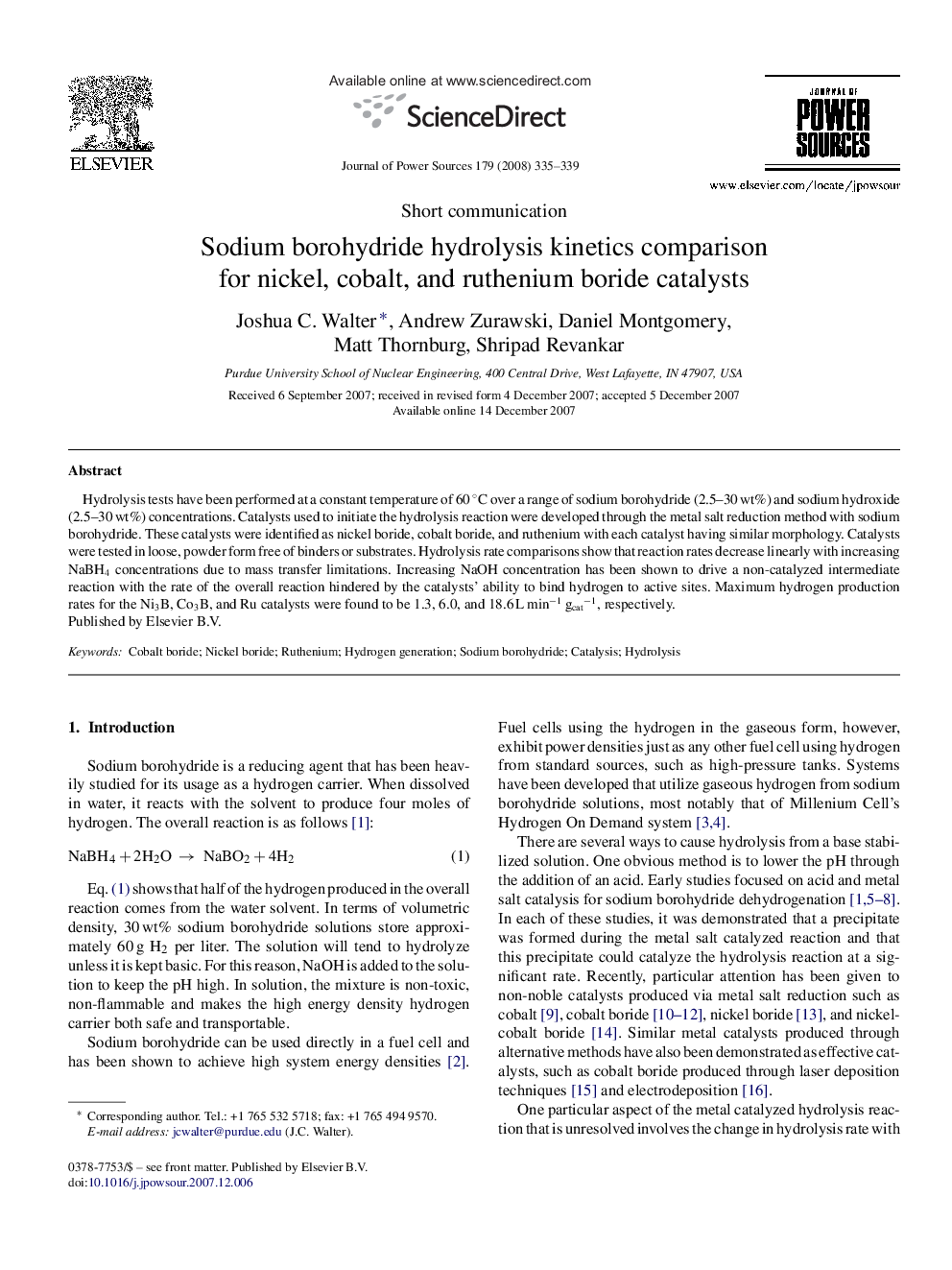| Article ID | Journal | Published Year | Pages | File Type |
|---|---|---|---|---|
| 1291440 | Journal of Power Sources | 2008 | 5 Pages |
Hydrolysis tests have been performed at a constant temperature of 60 °C over a range of sodium borohydride (2.5–30 wt%) and sodium hydroxide (2.5–30 wt%) concentrations. Catalysts used to initiate the hydrolysis reaction were developed through the metal salt reduction method with sodium borohydride. These catalysts were identified as nickel boride, cobalt boride, and ruthenium with each catalyst having similar morphology. Catalysts were tested in loose, powder form free of binders or substrates. Hydrolysis rate comparisons show that reaction rates decrease linearly with increasing NaBH4 concentrations due to mass transfer limitations. Increasing NaOH concentration has been shown to drive a non-catalyzed intermediate reaction with the rate of the overall reaction hindered by the catalysts’ ability to bind hydrogen to active sites. Maximum hydrogen production rates for the Ni3B, Co3B, and Ru catalysts were found to be 1.3, 6.0, and 18.6 L min−1 gcat−1, respectively.
